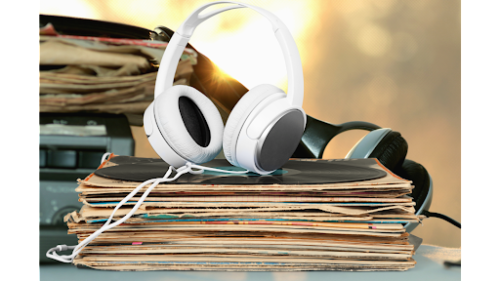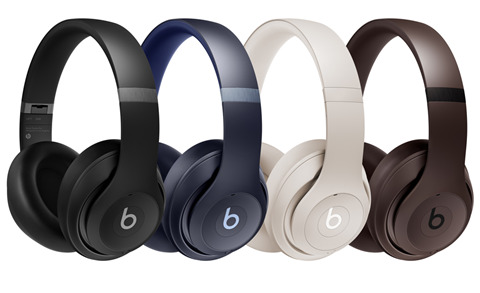
Headphones have become a basic necessity these days. Even though they have been used for many years now, if you have a curious mind and a little tilt toward history, then there may be several questions regarding headphones that might have crossed your mind. For instance, you might wonder when was the first time headphones came into existence, how the first headphones operated, or the reason behind the invention of wireless headphones or noise-cancellation technology.
Here is an article answering those questions and presenting some interesting facts about headphones you probably didn’t know.
Headphones Have Existed Since The 1880s
Yes, you heard it right! The first headphones were invented in the 1880s by telephone operators and had a single headpiece that was supposed to connect in one ear with another part as a mouthpiece working as a mic. The headphones worked through the gadget, which weighed 6-11 pounds and had to be rested on the operator’s shoulder. These headphones had nothing to do with music but were for practical and professional use, i.e., primarily for telephone operators.
By the 1890s, a British company called ‘Electrophone’ started providing services through headphones to subscribers for connecting to live feeds of performances at theaters and opera houses across London. The subscribers listened to the performances through a massive earphone connected below the chin and held by a long rod.
Even though the invention was revolutionary and attracted a lot of attention, these were not hands-free as the mouthpiece had to be held with a heavy resting contraption on the shoulder, causing discomfort.
First Handsfree Headphones Came In 1891
After popularizing the first set of headphones, French engineer Ernest Mercadier invented the first handsfree headphones, which also had a contraption but was not required to be kept on the shoulder. The U.S. government awarded him a patent number. These were the first hands-free headphones and the first in-ear headphones with a well-thought rubber cover on top to prevent ear surface damage due to friction.
His set resulted from extensive research and was considered a miniature version of the previous headphones, which were heavier and difficult to carry. These headphones weighed 1 ¾ ounces and were adapted for insertion into the ear. These were a significant relief at that time as they were light-weighted than the previously available headphones and were easier to carry from one place to another.
First Modern-Designed Headphones Were Made In The Kitchen
The modern-designed headphones were known as Baldwin’s Radio-Headset, two ear cups connected by a headband. It was the invention of a native man of Utah named Nathaniel Baldwin, who aimed to amplify the sound of Monks at Mormon temple. He made these headphones on his kitchen table, and it garnered attention. Several tests were performed on these headphones by the U.S. Navy, making them very popular and were highly requested for use by the Naval radio operators.
Later, on the demand of the U.S. Navy, Baldwin made prototypes and sold them to the U.S. Navy. Though, the design of these headphones never got patented as Bladwin thought that the innovation involved was too small to warrant it. He was also suggested to move out to a more significant location where he could produce a vast number of these headphones more easily, but he did not wish to move out.
As other manufacturers got wind of the situation, one of those named, ‘the Wireless Apparatus Speciality Co.’ worked with Baldwin to build a factory in Utah to produce more headphones with the agreement that the cost of these headphones would never be raised for the U.S Navy. This is how the first modern design headphones were invented.
Pilots Invented Wireless Headphones
In 1961, when headphones came in bulky and uncomfortable designs, pilots were dealing with the cumbersome issue of managing them during work. To find a better alternative to these headphones, United Airlines invited anyone interested in improvising the design.
Courtney Graham, a pilot, and his friend Keith Larkin, who was working in a small company called, ‘Plane-Aids’, in California, wanted to try it. They developed a lightweight headset with a headband component that used an acoustic tube connected to tiny transducers, which worked for both microphone and a receiver and was accepted by United Airlines.
This design of the headset was called the MS-50 headset. Graham and Larkin started their own company, later called, ”Pacific Plantronics Inc’ later. Their headphones were helpful to pilots and astronauts, call centers, and phone operators.
Noise-Canceling Technology Was Created Because Of Noisy Airplane Engines
The noise-canceling headphones were designed on a flight in 1978. While on his way back home, Dr. Amar Bose, founder of Bose Corporation, wanted to listen to some music on the flight but was disappointed because all he could hear was loud airplane engine noises, it doesn’t have equalizer settings as well. Before landing, he sketched out the design for noise-canceling headphones so that it removes unwanted sounds and makes listening with headphones easier.
The prototype of these headphones was successfully tested many times by pilots, and in 1989, for the first time, these noise-canceling headphones were commercially available.
Though noise-canceling headphones by Bose Corporation were first designed, these were not the only ones. A German Company, Sennheiser, was also testing its headphones in the same period and presented its first noise-canceling headphones for pilots in 1987.
Headphones Can Cause Loss Of Hearing
According to Genderlessvoice, it is safe to use headphones until done in limits, or you should use subtle equalizer settings. Wearing loud headphones that have a sound above the safe limits of 75dB for a longer period can contribute to the risk of hearing loss.
Also, wearing headphones for a long period can deprive the ears of natural air and cause bacterial growth. The eardrums cannot bear that amount of bacteria and could react and cause a loss of hearing. Several reports and studies have been conducted stating the harmful effects of prolonged exposure to headphones. Some precautionary measures can be opted to prevent the ears from harm.
For instance, in case of long exposure to headphones, you can turn down the volume. Noise-canceling headphones can also be used as a precaution as they block out external sound, allowing you to enjoy your favorite music at a low volume. Taking a break periodically might also be helpful as it will rest your ears.
Conclusion
There has been a continuous evolution in how headphones are used. From the time of their invention till the current times, I can say that after a period of every few years, there is a change in the design or the technology of the headphones.
I have tried to enlist some of the earlier changes in the headphones’ design and functionality. If you are interested in knowing more less-known facts about headphones, you could comment below, and I will make sure that I come up with some new facts and points related to headphones.
© 2023, Logan. All rights reserved.











